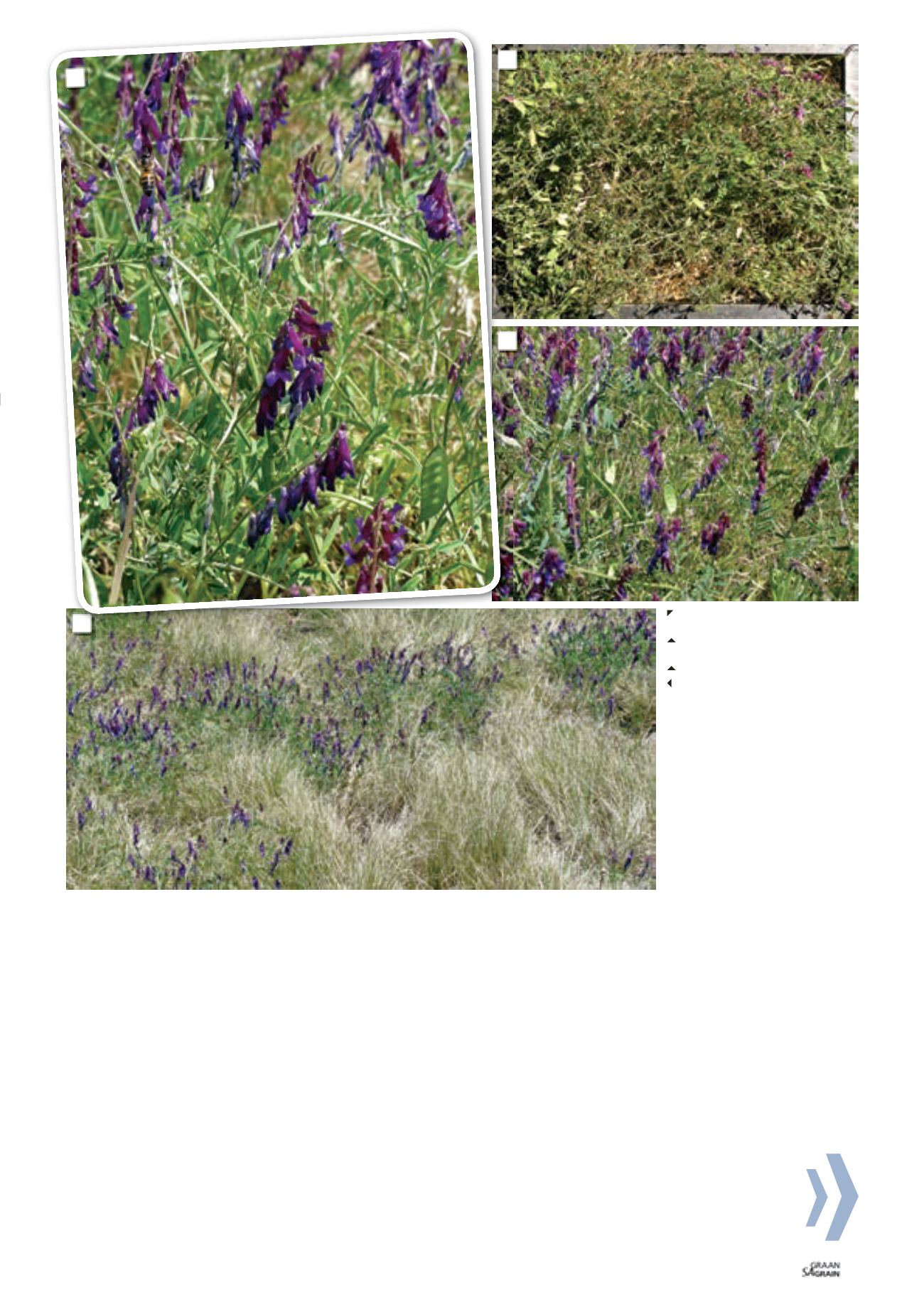

4
Vetch doesn’t build up long-term soil organic matter due to its
tendency to break down completely. It is a succulent crop, with a
relatively “low” carbon to nitrogen ratio. Its C:N ratio ranges from
8:1 to 15:1, but increases when used in combination with grasses,
such as oats and black oats.
Vetch provides some kind of weed control during its vigorous growth
stage and when it is left as a mulch once senesced. Research has
shown that hairy vetch mulch can increase main crop disease resist-
ance and prolong the leaf photosynthesis of the following crop.
Grazing vetch is a valuable plant for reduced-chemical or nonchemi-
cal management of insect pests. It attracts pollinators and benefi-
cial insects such as lady beetles, lacewings, minute pirate bugs, and
others (Smith and Valenzuela; 2002).
Common and purple vetch is therefore recommended as green ma-
nure crops. Grazing vetch as a cover crop, covers the soil well. The
fine biomass however breaks down rather quickly. It does well in
combinations with oats and black oats as a companion crop in mix-
tures, as well as radish.
Grazing vetch, especially an oats/vetch mix, enhances the stability
of soil aggregates (particles) and decreases the likelihood that the
aggregates will disintegrate in water.
Management challenges
If grazing vetch is sown into an end of cycle (three to five years)
sub-tropical grass pasture ley crop in the autumn months, before
being removed by the end of winter prior to the follow-up grain
crop, attention should be given to weed control until vetch has es-
tablished itself.
When planting grazing vetch it is important to keep in mind that
this vetch is known to be susceptible to root knot nematode infec-
tion, and its growth-limiting (allelopathic) effects on the next crop
such as lettuce, young grasses and peas. Grazing vetch can be a
host for
Sclerotinia minor
and should not be used when follow-up
crops are sensitive to it.
The best time for no-till maize planting into vetch varies with
local rainfall patterns, soil type, desired N contribution, season
length and vetch maturity.
1: Grazing vetch (
Vicia dasycarpa
)
being pollinated by bees.
2: Grazing vetch producing high
protein pods.
3: Grazing vetch in flower.
4: Grazing vetch seeded into
Eragrostis
pastures.
1
2
3
99
September 2015

















